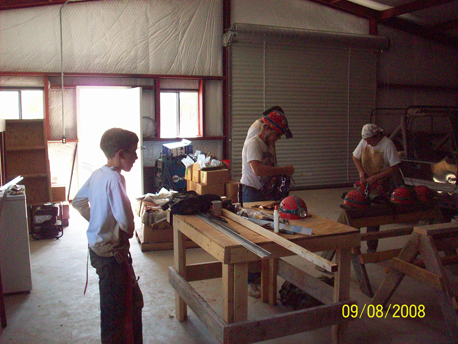 |
 |
McLeod claims, "the objectivity and authority of the museum curator are now no longer taken at face value and museums are seen as products of the societies that support them: a selective treasure house reflecting past and contemporary power relations" (2006, 182). In discussing recent trends in museum displays, Urry similarly suggests a move toward transparency. "It is now quite common for it to be revealed how a particular exhibit was prepared for exhibition, and in some cases even how it was made to appear 'authentic'" (1990, 131). He accepts the argument that these changes "involve replacing the notion that the museum is a collection for scholarly use with the idea that it is a means of communication" (ibid). Most show caves have traditionally been very willing to decribe their physical exhibition apparatuses since it has served their interests of promoting the historical and preservationist aspects of the cave experience. Some are describing more of their practices of shaping knowledge, and arguably, are allowing visitors more influence over their experience than ever before, despite the advancement of regulatory practices.
Rose suggests that "behind-the-scenes practices that operationalize
those institutions' regimes of truth" may reflect what Bann calls
"internal contradiction built into the development of the modern museum"
and therefore make investigation of the hidden, (or to use Goffman's
terminology 'backstage') spaces worthwhile (2006, 190). MacCannell
expands Goffman's front-back stage dichotomy to produce six distinct
sequential stages instead (1976, 101-102). From his extrapolation,
stages two through five might be seen as accomodating or in essence,
subsuming "negotiated" resistances. Stage four is described as "a back
region that is open to outsiders" while stage five is "a back region
that may be cleaned up or altered a bit because tourists are permitted
an occasional glimpse in" (ibid).

It may be argued that in the case of show caves, many of the newer, secondary tours can be considered as a market driven "backstage" entry. Many caves offer certain tourist glimpses of generally hidden spaces to accommodate the desires of the various subjecivities to know, communicate with or experience the cave in a less touristic manner.
Caves offering special photography tours and the NSS provision of an online Salon provides ample opportunities for the artist-photographer to witness the creation and advancement of cave art from an individual perspective, providing a window into the back stages of the art apparatus. Similary, while the caving societies cannot alway gain access to back areas of show caves, they are occasionally allowed special group tours, and have access to numerous uncommercialized caves at their leisure, and their communication of an entire body of conservationist, preservationist discourse is an active element of back stage production. For the discovery-explorer, "wild tours" grant access to cave areas traditionally only accessible to rangers, guides, scientitists and maintenance personnel. Since wild tours are generally developed with the interest of still trying to limit the tourists negative effect on the cave landscape, they often follow the path of the original entrance, exploration and/or development, allowing the tourist to see how the "show tour" sections of the cave were produced. Some secondary tours, like the lantern tour in Carlsbad are intended to connect the visitor with the historical discovery-explorer by recreating--to some degree--original conditions. In many cases, such tour offerings start and end in different, more exclusive areas that the standard show tour, as in this guide's workshop in the prepatory and disembarkment stages of Sonora's adventure tour.
[ Back ] | [ Continue Tour ] |